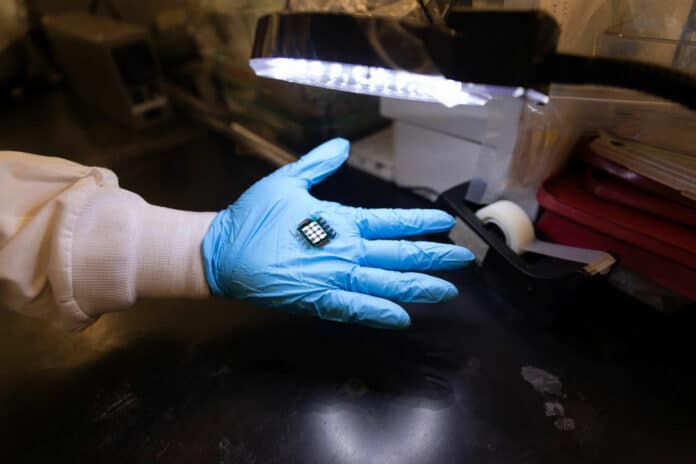When it comes to tandem solar cells, the first thought goes to the silicon-perovskite pairing and to the records achieved in recent years by this mix. An approach that has allowed photovoltaics to finally exceed 30% conversion efficiency without the use of optical and concentration systems.
Although to date, this recipe is one of the best in terms of results achieved, there are those who are trying to permanently replace silicon. This is the case of new research conducted by engineers from U of T Engineering, Northwestern University, and the University of Toledo. Together they developed an all-perovskite tandem solar cell with extremely high efficiency and record-setting voltage.
The all-perovskite tandem solar cell uses two different layers of perovskite, each tuned to a different part of the solar spectrum, to produce what is known as a tandem solar cell. Unlike silicon, the material’s thickness and chemical composition can be tweaked, so the manufacturers can selectively ‘tune’ the wavelengths of light that get absorbed and converted into electricity. At the same time, perovskite cells are cheaper to manufacture, theoretically more wear-resistant, and can be flexible, which cannot be said about silicon.
“In our cell, the top perovskite layer has a wider band gap, which absorbs well in the ultraviolet part of the spectrum, as well as some visible light,” says Chongwen Li, a postdoctoral researcher in Sargent’s lab and one of five co-lead authors on the new paper. “The bottom layer has a narrow band gap, which is tuned more toward the infrared part of the spectrum. Between the two, we cover more of the spectrum than would be possible with silicon.”
Using this design, the team created a prototype solar cell that measures one square centimeter in the area and produces an open-circuit voltage of 2.19 electron volts, which is a record for all-perovskite tandem solar cells. Its power conversion efficiency was measured at 27.4%, which is higher than the current record for traditional single-junction silicon solar cells. However, an independent certification from the National Renewable Energy Laboratory in Colorado reported a 26.3%.
It should be noted that both of these impressive performances were achieved thanks to tweaks made at the interface between the perovskite light-absorbing layer and the layer that carries electrons away. Researchers that the electric field across the surface of the perovskite layer was not uniform. So, they coated a substance known as 1,3-propanediammonium (PDA) onto the surface of the perovskite layer. This additional layer evens out the surface charge of the photocell and puts electrons across its surface to work.
The prototype device demonstrates the potential of this emerging photovoltaic technology to overcome key limits associated with traditional silicon solar cells while also offering a lower manufacturing cost.
Scientists say further work will be aimed at further enhancing efficiency by increasing the current that runs through the cell, improving stability, and enlarging the area of the cell so that it can be scaled up to commercial proportions.
Journal reference:
- Hao Chen, Aidan Maxwell, Chongwen Li, Sam Teale, Bin Chen, Tong Zhu, Esma Ugur, George Harrison, Luke Grater, Junke Wang, Zaiwei Wang, Lewei Zeng, So Min Park, Lei Chen, Peter Serles, Rasha Abbas Awni, Biwas Subedi, Xiaopeng Zheng, Chuanxiao Xiao, Nikolas J. Podraza, Tobin Filleter, Cheng Liu, Yi Yang, Joseph M. Luther, Stefaan De Wolf, Mercouri G. Kanatzidis, Yanfa Yan, and Edward H. Sargent. Regulating surface potential maximizes voltage in all-perovskite tandems. Nature (2022). DOI: 10.1038/s41586-022-05541-z
